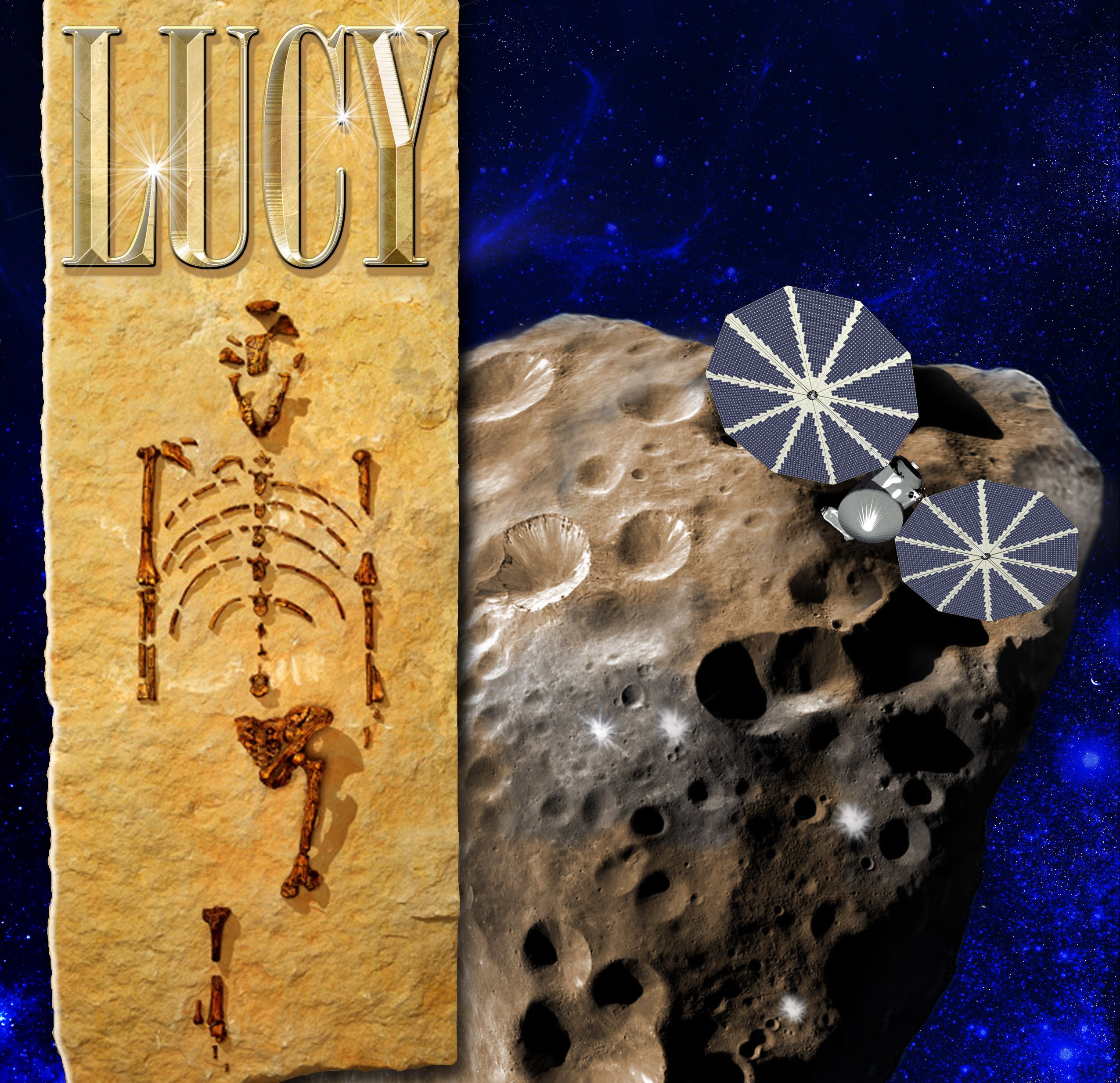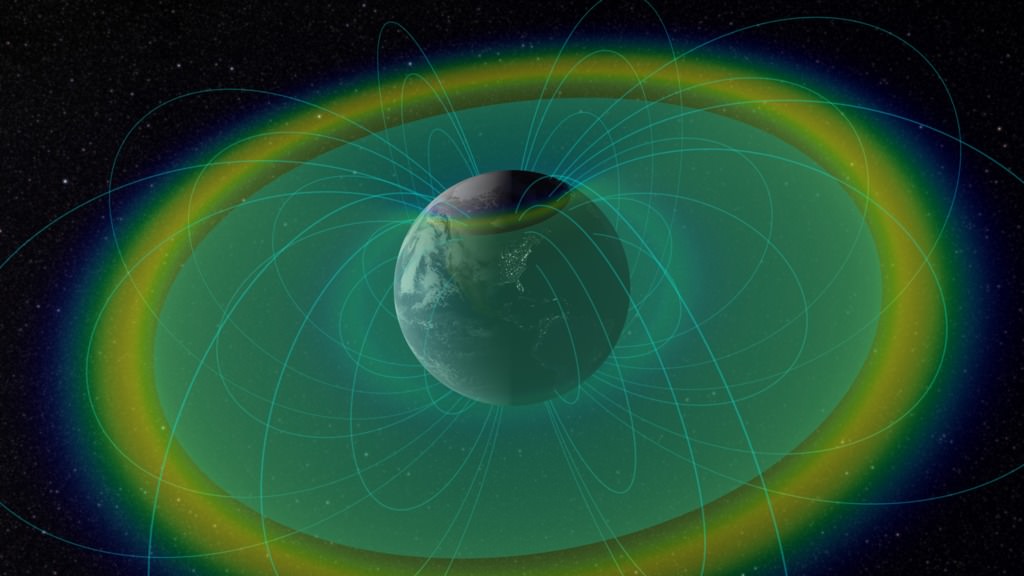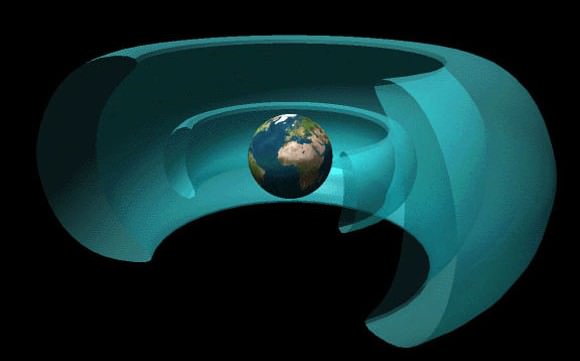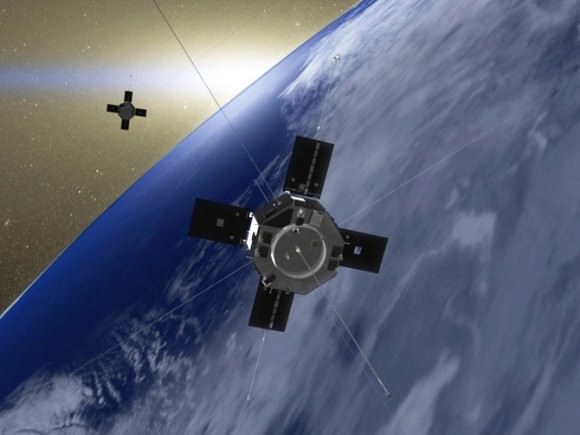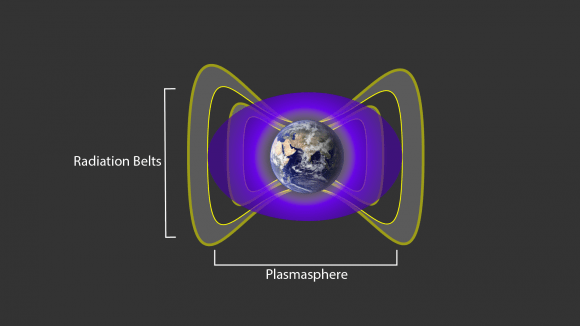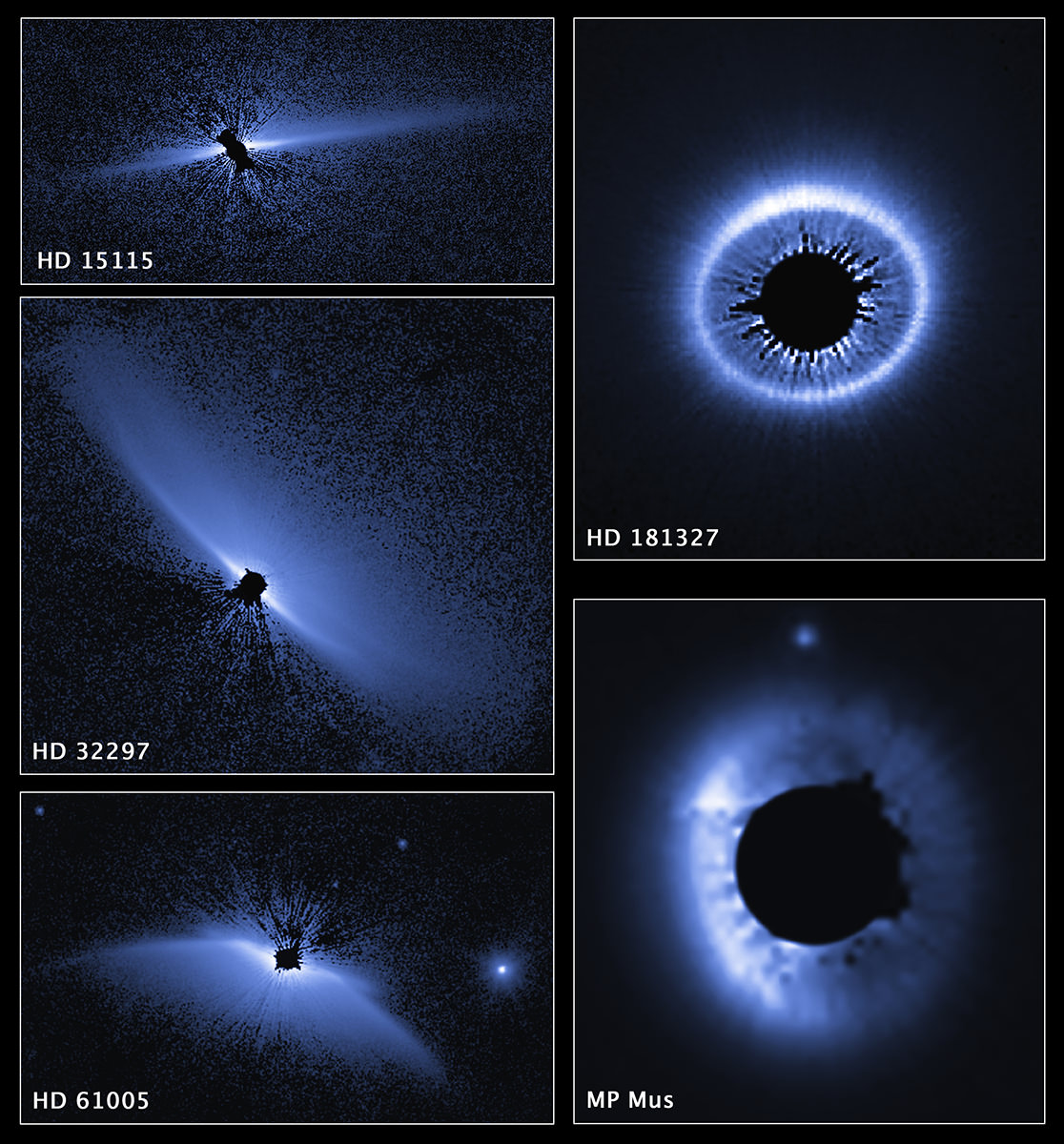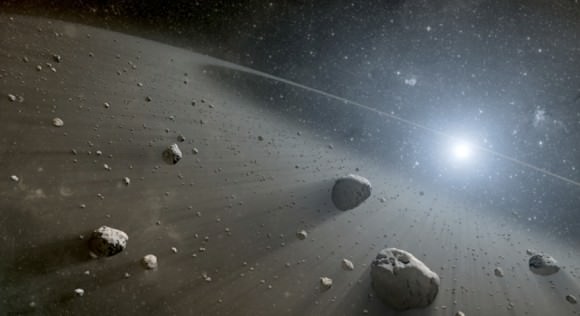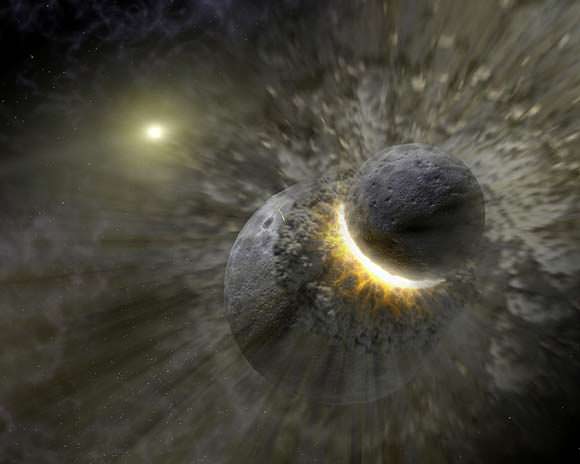In February of 2014, NASA’s Discovery Program put out the call for mission proposals, one or two of which will have the honor of taking part in Discovery Mission Thirteen. Hoping to focus the next round of exploration efforts to places other than Mars, the five semifinalists (which were announced this past September) include proposed missions to Venus, Near-Earth Objects, and asteroids.
When it comes to asteroid exploration, one of the possible contenders is Lucy – a proposed reconnaissance orbiter that would study Jupiter‘s Trojan Asteroids. In addition to being the first mission of its kind, examining the Trojans Asteroids could also lead to several scientific finds that will help us to better understand the history of the Solar System.
By definition, Trojan are populations of asteroids that share their orbit with other planets or moons, but do not collide with it because they orbit in one of the two Lagrangian points of stability. The most significant population of Trojans in the Solar System are Jupiter’s, with a total of 6,178 having been found as of January 2015. In accordance with astronomical conventions, objects found in this population are named after mythical figures from the Trojan War.
There are two main theories as to where Jupiter’s Trojans came from. The first suggests that they formed in the same part of the Solar System as Jupiter and were caught by the gas giant’s gravity as it accumulated hydrogen and helium from the protoplanetary disk. Since they would have shared the same approximate orbit as the forming gas giant, they would have been caught in its gravity and orbited it ever since.
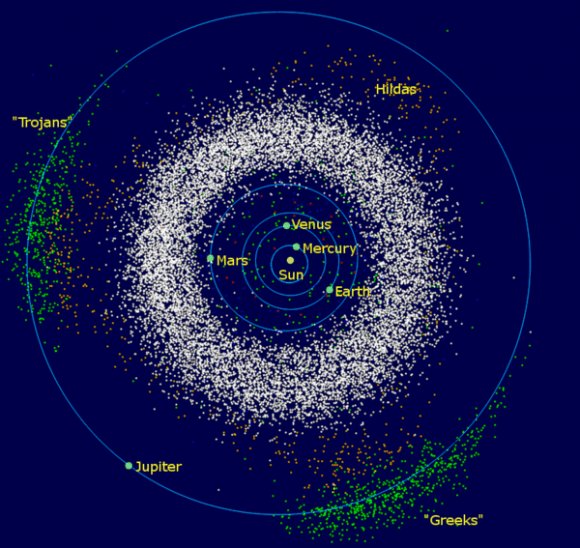
The second theory, part of the Nice model, proposes that the Jupiter Trojans were captured about 500-600 million years after the Solar System’s formation. During this period Uranus, Neptune – and to a lesser extent, Saturn – moved outward, whereas Jupiter moved slightly inward. This migration could have destabilized the primordial Kuiper Belt, throwing millions of objects into the inner Solar System, some of which Jupiter then captured.
In either case, the presence of Trojan asteroids around Jupiter can be traced back to the early Solar System. Studying them therefore presents an opportunity to learn more about its history and formation. And if in fact the Trojans are migrant from the Kuiper Belt, it would also be a chance for scientists to learn more about the most distant reaches of the solar system without having to send a mission all the way out there.
The mission would be led by Harold Levison of the Southwest Research Institute (SwRI) in Boulder, Colorado, with the Goddard Space Center managing the project. Its targets would most likely include asteroid (3548) Eurybates, (21900) 1999 VQ10, (11351) 1997 TS25, and the binary (617) Patroclus/Menoetius. It would also visit a main-belt asteroid (1981 EQ5) on the way.
The spacecraft would perform scans of the asteroids and determine their geology, surface features, compositions, masses and densities using a sophisticated suite of remote-sensing and radio instruments. In addition, during it’s proposed 11-year mission, Lucy would also gather information on the asteroids thermal and other physical properties from close range.
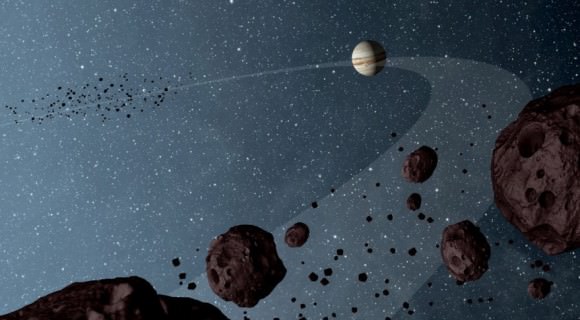
The project is named Lucy in honor of one of the most influential human fossils found on Earth. Discovered in the Awash Valley of Ethiopia in 1974, Lucy’s remains – several hundred bone fragments that belonged to a member the hominid species of Australopithecus afarensis – proved to be an extraordinary find that advanced our knowledge of hominid species evolution.
Levison and his team are hoping that a similar find can be made using the probe of the same name. As he and his colleagues describe it, the Lucy mission is aimed at “Surveying the diversity of Trojan asteroids: The fossils of planet formation.”
“This is a once-in-a-lifetime opportunity,” said Levinson. “Because the Trojan asteroids are remnants of that primordial material, they hold vital clues to deciphering the history of the solar system. These asteroids are in an area that really is the last population of objects in the solar system to be visited.”
The payload is expected to include three complementary imaging and mapping instruments, including a color imaging and infrared mapping spectrometer, a high-resolution visible imager, and a thermal infrared spectrometer. NASA has also offered an additional $5 to $30 million in funding if mission planners choose to incorporate a laser communications system, a 3D woven heat shield, a Deep Space atomic clock, and/or ion engines.
As one of the semifinalists, the Lucy mission has received $3 million dollars to conduct concept design studies and analyses over the course of the next year. After a detailed review and evaluation of the concept studies, NASA will make the final selections by September 2016. In the end, one or two missions will receive the mission’s budget of $450 million (not including launch vehicle funding or post-launch operations) and will be launched by 2020 at the earliest.

